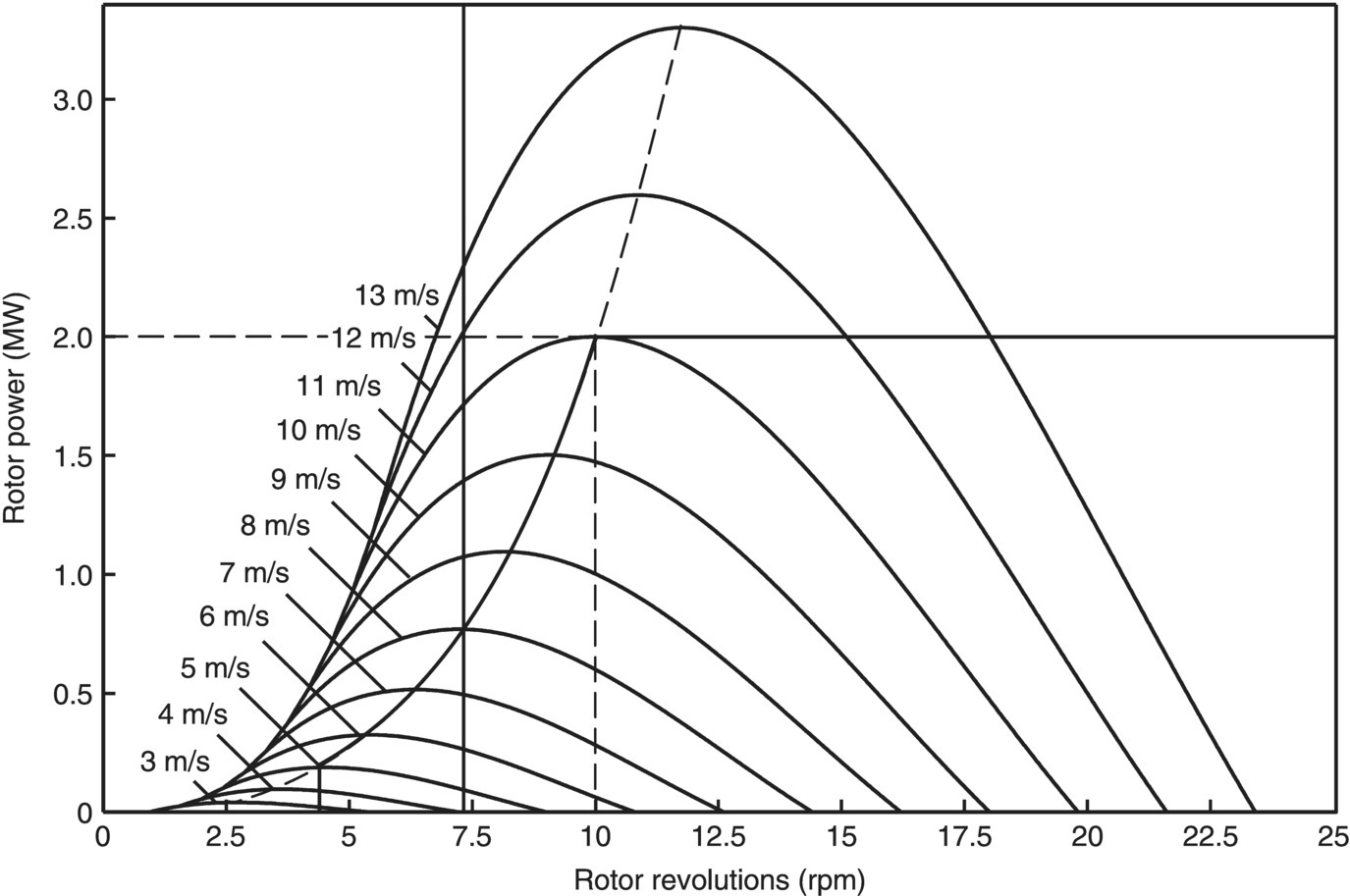8Power Electronics and Generator Systems for Wind Turbines
Friedrich W. Fuchs
8.1 Introduction
Mechanical power that is acquired from the wind with the aid of the rotor of the wind turbine is transformed into electrical energy by means of the generator and fed into the electric grid. For this purpose, various suitable concepts are available [1,2]. Often a gear drive is interposed for converting the torque in order to be able to select the speed of revolution of the rotor and generator to the optimum, independently of the wind speed. On the electrical side, the generator is to be designed for the rated frequency and voltage of the grid by means of a transformer.
The power acquired from the rotor of the wind turbine and transferred to the shaft of the generator depends upon the velocity of the wind and the speed of rotation of the rotor, as shown in Figure 8.1. The rising curves for slow revolutions and the falling curves for high revolutions show a clear maximum. The curves are valid for constant pitch or blade setting angles.

Figure 8.1 Power-revolution diagram of a rotor arrangement of a wind turbine and characteristic curve of a generator at fixed (vertical line at about 7.5 m/s) and at variable optimum frequencies (starting at about 4 m/s); example of a 2 MW plant; parameterising wind velocity, pitch angle constant; from 11 m/s power constant at 2 MW
When operating a three-phase AC ...
Get Understanding Wind Power Technology: Theory, Deployment and Optimisation now with the O’Reilly learning platform.
O’Reilly members experience books, live events, courses curated by job role, and more from O’Reilly and nearly 200 top publishers.

